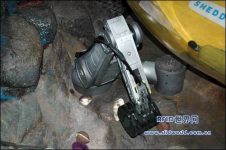
Chicago Aquarium uses RFID to realize children’s interest interaction in Mimic Ocean
[ad_1]
When the Shedd Aquarium in Chicago was planning to build the Oceanarium, an interactive children’s area within the aquarium, the project team didn’t want to use a lot of technology. They believe that the target group – kids ages 2-7 – don’t need to push buttons or manipulate machinery, as children in this age group tend to break them. However, the project team did want to develop a system that would help children learn about the ocean in a fun and interactive way.
“The technology we used had to be easy to operate,” says Tynetta Qaiyim, aquarium program manager and director of display programs, “but requiring certain gross motor skills (skills that are still developing in young children).”
Many project team members had not heard of RFID, and they eventually came up with a method, using a submarine, children ride it into the simulated seabed. In the submarine, the child uses a joystick to remotely control a robotic hand with claws at the end to pick up objects in a simulated seabed. If an item is picked up, a computer screen in the submarine will display information about the item. The question is how to identify this item so that the screen displays the correct information? After some investigation, the project team found RFID.
The project team contacted several RFID manufacturers and purchased a TagSense 13.56 MHz RFID reader and SimpleTechnology tags, as well as Zinc 3.0 software to manage the reader data.
The team embedded several tags in each underwater item, such as clams, shellfish and rocks (made from stucco). They installed a reader on the front of the paw and put it on a protective shell, and the paw reader would not read the tags of ungrabbed items, even though the reader was only a few centimeters away from the tagged item.

When the mechanical claw picks up the item, the reader reads the tag, and the system displays the relevant information on the computer screen in the submarine
The project team buys tags and readers, embeds tags on all seabed mimics or objects, and develops software that displays detailed information about the items taken.
The aquarium hired media design firm Mightybytes to provide media-related software and system integration for the project.
Mightybytes increased the number of inline tags per item to address low read rates. Another option was to put labels on the exterior of each item, but the visibility of the labels would distract children and reduce authenticity, so the project team had to embed the labels inside the items.
Mightybyte engineers suggested that items should be embedded with more tags to ensure that readers can read the tags through the item. Frick says they now have 20 tags embedded in each 5- or 6-inch-long item.
When the gripper picks up an item, the reader reads the ID code of the tag (each tag contains an ID code, which corresponds to the attached item in the software), and the reader sends the ID to the computer running the software via a USB cable. The software instructs the computer screen to display information about the item, using Adobe’s Flash and After Effects software and Autodesk’s 3D Studio MAX to display media information.
It took Mightybytes just a week to install the system, and Qaiyim said the kids loved the ocean-like interactive project.
[ad_2]



